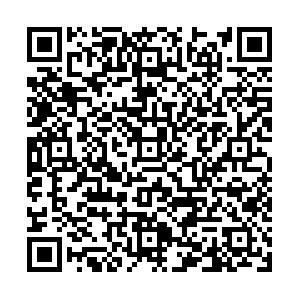Clinical observation of different doses of pulmonary surfactant combined with INSURE technology in the treatment of neonatal respiratory distress syndrome
-
摘要:
目的 探讨不同剂量肺表面活性物质联合INSURE技术对新生儿呼吸窘迫综合征治疗效果的影响。 方法 选取2017年1月—2020年9月就诊于安徽省第二人民医院NICU 80例新生儿呼吸窘迫综合征为研究对象。按照随机数字法分为观察组和对照组,各40例,2组均给予INSURE技术注入肺表面活性物质(PS)治疗,其中对照组给予PS 70 mg/kg,观察组给予PS 100 mg/kg,比较2组患儿治疗前后的临床疗效、血气分析指标、氧合指数、用氧时间、住院时间以及并发症发生率。 结果 治疗后观察组(100.0%)临床总有效率高于对照组(85.0%,P < 0.05);观察组用氧时间明显短于对照组(P < 0.05);2组住院时间比较差异无统计学意义(P>0.05);2组治疗前血气分析结果及氧合指数比较差异无统计学意义(均P>0.05);治疗后血气分析结果及氧合指数均较治疗前明显改善,其中PaO2上升,PaCO2下降,pH改善,差异有统计学意义(均P < 0.05);观察组PaO2[(77.55±5.79)mm Hg,1 mm Hg=0.133 kPa]明显高于对照组[(72.45±4.37)mm Hg],PaCO2[(39.45±2.45)mm Hg]低于对照组[(40.88±2.32)mm Hg],观察组pH(7.36±0.02)改善优于对照组(7.35±0.02),差异均有统计学意义(均P < 0.05);观察组并发症发生率(12.5%)低于对照组(35.0%,P < 0.05)。 结论 100 mg/kg PS联合INSURE技术治疗新生儿呼吸窘迫综合征,可显著改善患者临床症状,改善氧合指数,减少用氧时间及临床并发症。 Abstract:Objective To investigate the clinical effect of different doses of pulmonary surfactant (PS) combined with INSURE technology in the treatment of neonatal respiratory distress syndrome. Methods A total of 80 neonatal respiratory distress syndrome cases in the NICU of Anhui No.2 Provincial People's Hospital from January 2017 to September 2020 were selected as the research objects. According to the random number method, the children were divided into two groups with 40 cases in each group. Both groups were treated with INSURE technology and injected with PS. The control group was given 70 mg/kg PS, and the experimental group was given 100 mg/kg PS. The clinical efficacy, blood gas analysis index, oxygenation index, oxygen duration, length of hospital stay and incidence of complications of the two groups were compared before and after treatment. Results The total effective rate of the experimental group (100.0%) was higher than that of the control group (85.0%), and the difference was statistically significant (P < 0.05). The duration of oxygen use in the experimental group was significantly shorter than that of the control group (P < 0.05). No difference was observed in the length of stay between the two groups (P>0.05). No significant difference was observed in blood gas analysis and oxygenation indices between both groups before treatment (P>0.05). The blood gas analysis and oxygenation index after treatment were significantly improved compared with those before treatment; that is, PaO2 increased, PaCO2 decreased, and pH improved (all P < 0.05). The PaO2 [(77.55±5.79) mm Hg] of the experimental group was significantly higher than that of the control group [(72.45±4.37) mm Hg], whilst the PaCO2 [(39.45±2.45) mm Hg] was lower than that of the control group [(40.88±2.32) mm Hg]. The pH of the experimental group (7.36±0.02) was significantly better than that of the control group (7.35±0.02), with statistically significant differences (P < 0.05). The complication rate of the experimental group (12.5%) was lower than that of the control group (35.0%), and the difference was statistically significant (P < 0.05). Conclusion The treatment of neonatal respiratory distress syndrome with 100 mg/kg PS combined with INSURE technology can significantly improve the clinical symptoms, improve oxygenation and reduce the duration of oxygen use and clinical complications. -
表 1 2组NRDS患儿临床总有效率比较[例(%)]
组别 例数 显效 有效 无效 总有效 观察组 40 22(55.0) 18(45.0) 0(0.0) 40(100.0) 对照组 40 8(20.0) 26(65.0) 6(15.0) 34(85.0) 注:2组总有效率比较,χ2=4.504, P=0.033。无同一例患儿出现2种及以上并发症。 表 2 2组NRDS患儿用氧天数和住院天数比较(x ±s,d)
组别 例数 用氧时间 住院时间 观察组 40 7.63±5.84 21.08±9.26 对照组 40 11.53±9.02 21.33±11.89 t值 2.295 0.105 P值 0.025 0.917 表 3 2组NRDS患儿治疗前后血气分析和氧合指数比较(x ±s)
组别 例数 pH PaO2(mm Hg) PaCO2(mm Hg) OI(mm Hg) 治疗前 治疗后 治疗前 治疗后 治疗前 治疗后 治疗前 治疗后 观察组 40 7.32±0.03 7.36±0.02a 57.38±6.28 77.55±5.79a 47.65±3.15 39.45±2.45a 176.68±37.96 311.28±56.24a 对照组 40 7.33±0.04 7.35±0.02a 56.55±6.02 72.45±4.37a 47.75±3.04 40.88±2.32a 173.83±36.58 261.10±43.53a t值 0.256 2.597 0.600 4.447 0.145 2.720 0.342 4.462 P值 0.799 0.011 0.550 < 0.001 0.885 0.008 0.733 < 0.001 注:与治疗前比较,aP < 0.05。1 mm Hg=0.133 kPa。 表 4 2组NRDS患儿临床并发症比较[例(%)]
组别 例数 BPD VAP ROP 气胸 颅内出血 合计 观察组 40 1(2.5) 1(2.5) 2(5.0) 0(0.0) 1(2.5) 5(12.5) 对照组 40 3(7.5) 2(5.0) 4(10.0) 1(2.5) 4(10.0) 14(35.0) 注:2组并发症总发生率比较,χ2=5.591,P=0.018。 -
[1] MUSSAVI M, MIRNIA K, ASADOLLAHI K. Comparison of the efficacy of three natural surfactants (curosurf, survanta, and alveofact) in the treatment of respiratory distress syndrome among neonates: A Randomized Controlled Trial[J]. Iran J Pediatr, 2016, 26(5): e5743. http://pubmedcentralcanada.ca/pmcc/articles/PMC5297380/?lang=fr [2] 黄方, 刘小辉. 肺泡表面活性物质联合双水平正压通气治疗新生儿呼吸窘迫综合征的疗效观察[J]. 临床肺科杂志, 2019, 24(6): 1023-1025. doi: 10.3969/j.issn.1009-6663.2019.06.015 [3] 叶玲. 不同的肺表面活性物质联合无创高频振荡通气治疗新生儿呼吸窘迫综合征的疗效对比[J]. 中国疗养医学, 2020, 29(11): 1203-1205. https://www.cnki.com.cn/Article/CJFDTOTAL-ZGLX202011034.htm [4] 肖小芳, 彭好. 肺表面活性物质在新生儿呼吸窘迫综合征的应用[J]. 医学综述, 2020, 26(7): 1379-1383. doi: 10.3969/j.issn.1006-2084.2020.07.026 [5] SWEET D G, CARNIELLI V, GREISEN G, et al. European consensus guidelines on the management of respiratory distress syndrome -2019 update[J]. Neonatology, 2019, 115(4): 432-450. doi: 10.1159/000499361 [6] 王刚, 高敏. INSURE技术治疗早产儿呼吸窘迫综合征临床观察[J]. 中国临床新医学, 2017, 10(10): 978-981. doi: 10.3969/j.issn.1674-3806.2017.10.15 [7] SARDESAI S, BINIWALE M, WERTHEIMER F, et al. Evolution of surfactant therapy for respiratory distress syndrome: Past, present, and future[J]. Pediatr Res, 2017, 81(1-2): 240-248. doi: 10.1038/pr.2016.203 [8] CHUN J, SUNG S I, HO Y H, et al. Prophylactic versus early rescue surfactant treatment in preterm infants born at less than 30 weeks gestation or with birth weight less than or equal 1, 250 grams[J]. J Korean Med Sci, 2017, 32(8): 1288-1294. doi: 10.3346/jkms.2017.32.8.1288 [9] 李科纯, 钱素云, 曾健生. 肺表面活性物质治疗急性呼吸窘迫综合征研究现状[J]. 中国实用儿科杂志, 2018, 33(6): 431-434. https://www.cnki.com.cn/Article/CJFDTOTAL-ZSEK201806010.htm [10] 钱文亚, 谢晓恬. 外源性肺表面活性物质治疗新生儿呼吸窘迫综合征临床方法学研究[J]. 世界临床药物, 2020, 41(3): 177-182. https://www.cnki.com.cn/Article/CJFDTOTAL-GWHH202003006.htm [11] 邵肖梅, 叶鸿瑁, 丘小汕. 实用新生儿学[M]. 5版. 北京: 人民卫生出版社, 2019: 575-578. [12] 吴淑明, 郭淑艳, 赵旭. 肺表面活性物质联合持续气道正压通气治疗新生儿呼吸窘迫综合征的效果研究[J]. 中国妇幼保健, 2017, 32(17): 4174-4176. https://www.cnki.com.cn/Article/CJFDTOTAL-ZFYB201717053.htm [13] MEHRABADI A, LISONKOVA S, JOSEPH KS. Heterogeneity of respiratory distress syndrome: Risk factors and morbidity associated with early and late gestation disease[J]. BMC Pregnancy and Childbirth, 2016, 16(1): 281. doi: 10.1186/s12884-016-1085-7 [14] 张纪伟. 肺表面活性物质治疗新生儿呼吸窘迫综合征的临床疗效分析[J]. 临床医学, 2017, 37(3): 113-114. https://www.cnki.com.cn/Article/CJFDTOTAL-EBED201703052.htm [15] 李凌, 张志红, 张慧琴, 等. 持续气道正压呼吸联合珂立苏治疗新生儿呼吸窘迫综合征的疗效观察[J]. 中南医学科学杂志, 2017, 45(5): 499-502. https://www.cnki.com.cn/Article/CJFDTOTAL-HYYY201705018.htm [16] 孔祥永, 封志纯, 杨慧霞, 等. 早产儿呼吸窘迫综合征早期防治专家共识[J]. 中华围产医学杂志, 2017, 20(8): 557-559. doi: 10.3760/cma.j.issn.1007-9408.2017.08.002 [17] 霍梦月, 梅花, 张钰恒, 等. 低侵入性肺表面活性物质治疗技术治疗新生儿呼吸窘迫综合征有效性和安全性的Meta分析[J]. 中国当代儿科杂志, 2020, 22(7): 721-727. https://www.cnki.com.cn/Article/CJFDTOTAL-DDKZ202007011.htm [18] SWEET D G, CARNIELLI V, GREISEN G, et al. European consensus guidelines on the management of respiratory distress Syndrome -2016 update[J]. Neonatology, 2017, 111(2): 107-125. doi: 10.1159/000448985 -

 点击查看大图
点击查看大图
计量
- 文章访问数: 194
- HTML全文浏览量: 115
- PDF下载量: 9
- 被引次数: 0



 下载:
下载: 